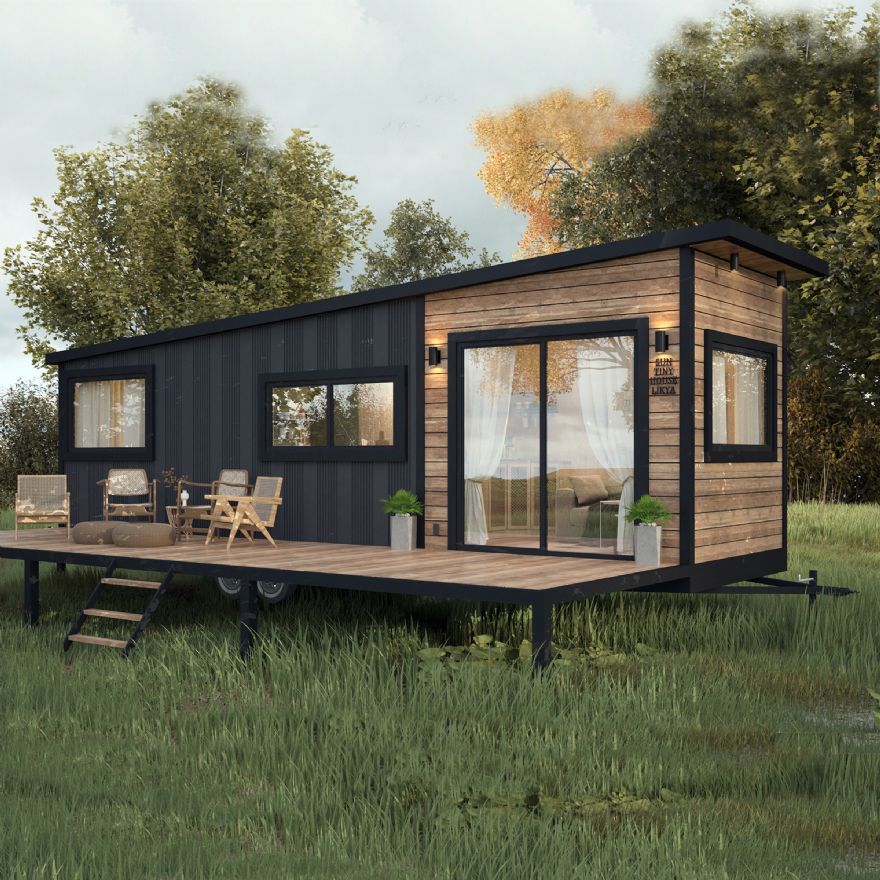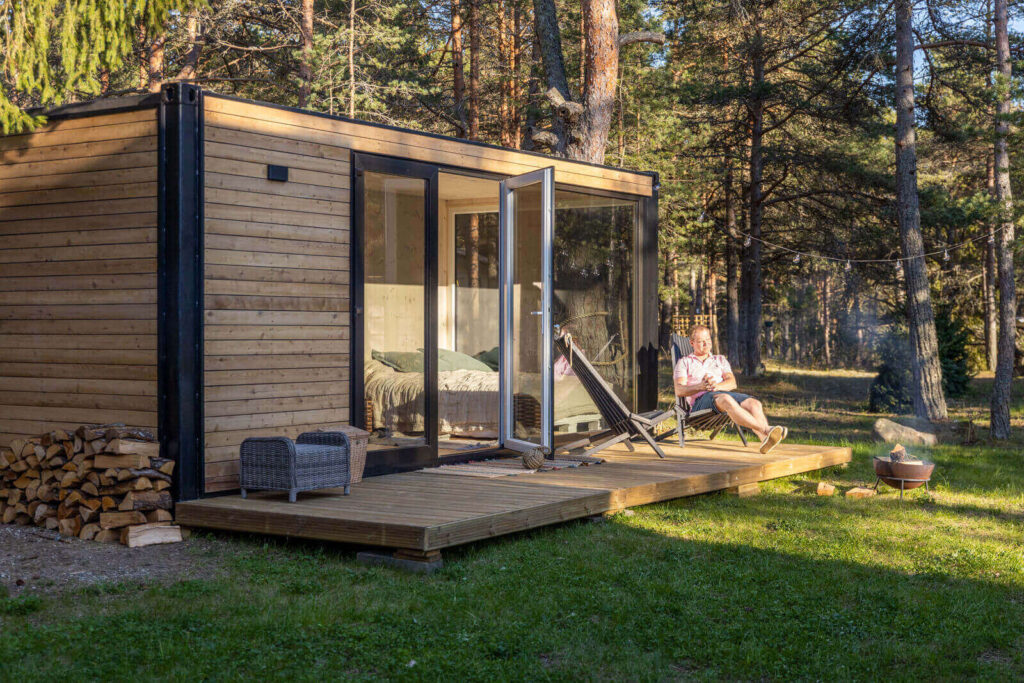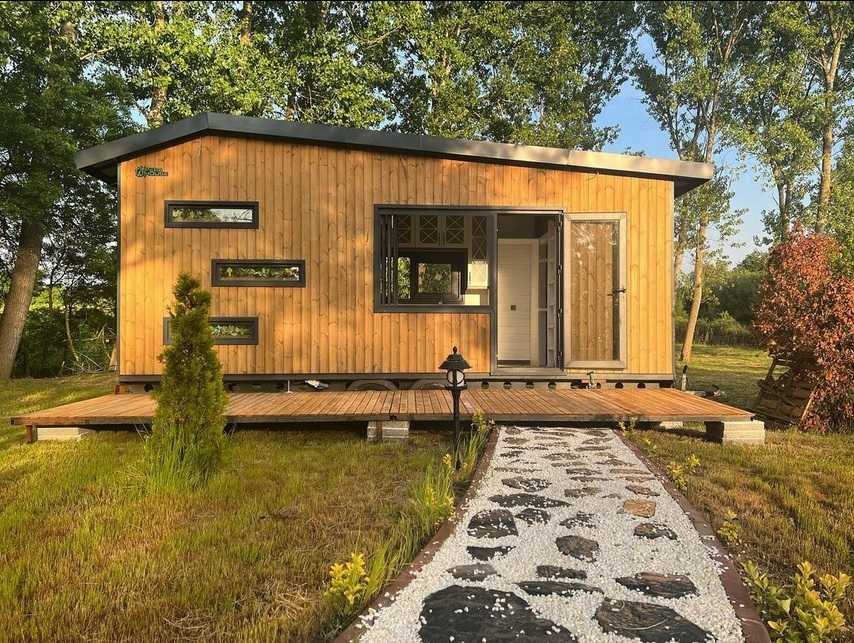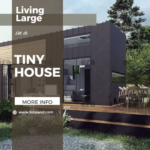Making money with tiny houses means generating income through various activities related to tiny houses such as building, renting, selling, customizing, or teaching others how to build tiny houses.
There are several ways to make money with tiny houses, including;
Renting tiny houses out as vacation rentals
This can be a great way to generate income while also giving people the opportunity to try out tiny living. However, it can be challenging to find the right location and market the rental effectively.
Renting tiny houses out as vacation rentals can be a profitable way to make money with tiny houses. Here are some steps to consider:
- Location: Choose a location that is popular with tourists and has a high demand for vacation rentals.
- Legal requirements: Research local laws and regulations regarding short-term rentals and ensure that your tiny house rental business is compliant with all relevant laws.
- Insurance: Obtain insurance to cover any potential damage or accidents that may occur during a guest’s stay.
- Marketing: Create a listing for your tiny house on online platforms such as Airbnb or VRBO, and market it through social media and other channels to attract guests.
- Maintenance and Cleaning: Ensure that the tiny house is kept in good condition and arrange for regular cleaning and maintenance.
- Guest management: Communicate with guests, manage bookings and reviews, and provide excellent customer service to ensure positive guest experiences.
It’s important to note that renting out tiny houses as vacation rentals requires some level of investment and commitment, including time and money for marketing, guest management, and property maintenance. To maximize your income, you should aim to keep the tiny house occupied as much as possible, by setting competitive prices and providing a great guest experience.
Building and selling tiny houses

Building and selling tiny houses can be a profitable business for those with experience in construction and design. Here are some steps to consider:
- Research: Research the market for tiny houses, find out what types of designs and layouts are in demand and what are the prices in the area you intend to sell.
- Design: Create a variety of designs that cater to different needs, such as single-story, multi-story, and off-grid designs.
- Building: Build the tiny houses using high-quality materials and techniques, and ensure that they comply with local building codes and zoning laws.
- Marketing: Advertise and market the tiny houses through social media, online platforms, and publications to attract potential buyers.
- Sales: Handle the sales process, including negotiations, paperwork, and closing the deal.
It’s important to note that building and selling tiny houses requires a good understanding of the tiny house building industry, as well as good business acumen and an understanding of the market and regulations. It may be beneficial to consult with legal and business professionals to ensure that your business is set up properly and your tiny houses are compliant with industry standards. Additionally, you should have a solid marketing strategy in place to attract buyers and generate sales.
Starting a tiny house building or design business
This can be a great way to tap into the growing demand for tiny houses and offer customized solutions to clients. But sometimes it may be challenging to establish a reputation and attract clients in a crowded market.
Renting out land to people who want to park their own tiny houses on it
This can be a great way to generate passive income while also providing a service to the tiny house community. However, it can be challenging to find the right location and navigate zoning and land-use regulations.
Offering tiny house customization and renovation services

Tiny house customization and renovation services typically include designing and building custom tiny houses, as well as renovating and upgrading existing tiny houses. These services can include things like installing new flooring and cabinetry, adding electrical and plumbing systems, and building custom furniture and storage solutions. Some companies may also offer additional services such as architectural design, project management, and consulting on zoning and building codes. It’s important to research and choose a company with experience and a good reputation in the tiny house industry.
Starting a tiny house community or co-living space
Starting a tiny house community or co-living space involves several steps and considerations.
- Location: Choose a location that is accessible and has infrastructure and resources for tiny houses, such as a nearby sewage treatment facility and electricity supply.
- Zoning and Building Codes: Research local zoning laws and building codes to ensure that tiny houses are allowed in your chosen location, and that the community will comply with all relevant regulations.
- Community Design: Decide on the layout and design of the community, such as the number of homes, shared spaces, and amenities.
- Financing: Secure funding for the project, which can come from a variety of sources such as private investors, crowdfunding, or grants.
- Communication: Communicate with the community and other stakeholders, such as local authorities and neighboring residents, to ensure that the project is well-received and that any concerns are addressed.
- Marketing: Advertise and market the community to attract potential residents and investors.
It’s important to note that starting a tiny house community or co-living space can be a complex and time-consuming process, and it’s advisable to seek professional assistance such as lawyers, architects, and community planners, to help you navigate the legal, financial and design aspects of the project.
Creating and selling plans or blueprints for tiny houses

Creating and selling plans or blueprints for tiny houses can be a good business opportunity for those with experience and expertise in architectural design and construction. Here are some steps to consider:
- Research: Research the market for tiny houses and find out what types of designs and layouts are in demand.
- Design: Create a variety of designs that cater to different needs, such as single-story, multi-story, and off-grid designs.
- Technical drawings: Create detailed technical drawings of the tiny house designs, including floor plans, elevations, and electrical and plumbing schematics.
- Building codes: Ensure that the designs comply with local building codes and zoning laws.
- Copyright and Licensing: Copyright the plans and consider offering license options to allow customers to build the design on their own land.
- Marketing and Sales: Advertise and market the plans through social media, online platforms, and publications.
It’s important to note that selling plans or blueprints for tiny houses is not just about having good design skills, but also having good business acumen and an understanding of the market and regulations. It may be beneficial to consult with legal and business professionals to ensure that your business is set up properly and your plans are compliant with industry standards.
Offering tiny house building workshops or classes
Offering tiny house building workshops or classes can be a great way to share your knowledge and skills in the tiny house building industry and make a profit. Here are some steps to consider:
- Develop a curriculum: Create a curriculum that covers all the aspects of tiny house building, from design and planning to construction and finishing.
- Identify your target audience: Determine who your target audience is and tailor your classes or workshops accordingly.
- Venue and equipment: Identify a suitable venue and acquire the necessary equipment and materials for the classes or workshops.
- Advertising and registration: Advertise your classes or workshops and create a registration process for attendees.
- Teaching and mentoring: Teach and mentor participants throughout the class, providing guidance and hands-on instruction.
- Follow-up and support: Provide follow-up support and resources to participants after the class to help them continue their tiny house building journey.
It’s important to note that offering tiny house building workshops or classes requires a good understanding of the tiny house building industry, as well as good teaching and mentoring skills. You should be able to provide valuable information, advice, and hands-on instruction to attendees. It may also be beneficial to consult with legal and business professionals to ensure that your business is set up properly and comply with any regulations or certifications required.




0 Comments